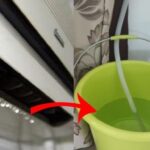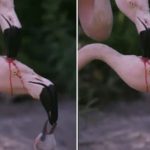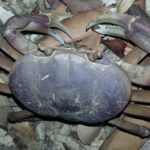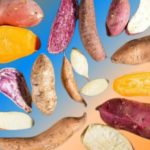Flamingos are renowned for their striking pink feathers, and a prevalent myth surrounds the origin of this unique coloration. According to folklore, flamingos attain their rosy hue from consuming their parents’ blood. This legend has been perpetuated by tales of flamingos drinking their parents’ blood or feeding on their brains, resulting in the distinctive red plumage. Additionally, videos depicting flamingos pecking at each other’s heads to obtain blood for their young have circulated, shocking many.
However, the truth behind this phenomenon is far less gruesome. The red liquid that flamingo chicks consume is not blood but a nutrient-rich substance known as “crop milk” or “bird milk.” This milk is produced in the lining of the upper digestive tract of both male and female flamingos and is extremely high in proteins and fats. To feed their chicks, adult flamingos regurgitate this milk onto their own heads, allowing it to dribble into the mouths of their waiting offspring.
The myth of flamingos consuming blood may have arisen due to the striking red color of the crop milk, which could be misinterpreted as blood. This misunderstanding was likely exacerbated by the visually striking but misleading videos circulating online.
Now, let’s delve into the fascinating world of flamingos and uncover more intriguing facts about these majestic birds:
## The Mystery Unveiled:
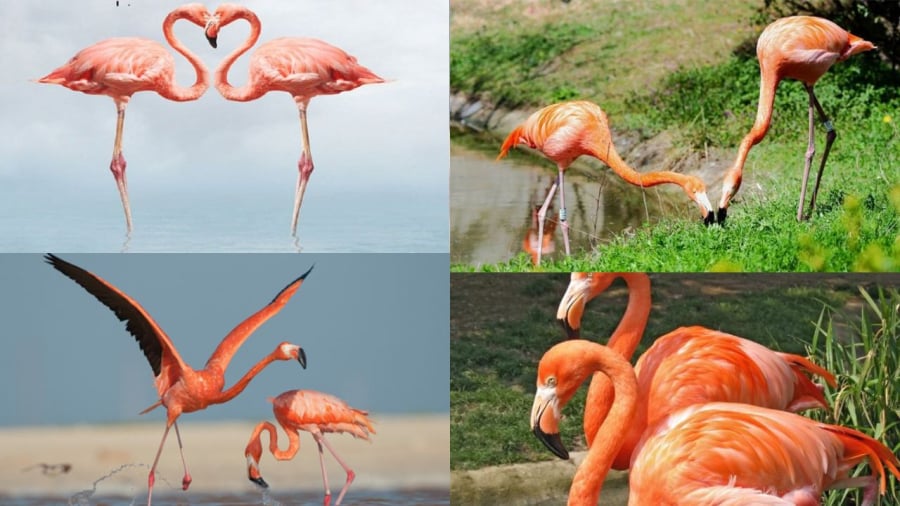
Unraveling the Myth Behind the Pink Feathers
– **Nutrition for Chicks**: Flamingo chicks rely solely on crop milk for their first two months of life after hatching. This milk is an essential source of nutrition, providing them with the energy and nutrients necessary for growth and development.
– **Carotenoids and Feather Coloration**: The pink or reddish hue of adult flamingos’ feathers is a result of their diet. Carotenoids, organic compounds found in plants and animals, are responsible for the vibrant yellow, orange, and red colors in various foods. Flamingos obtain these carotenoids by feeding on shrimp, mollusks, insects, and algae, which are rich in these pigments. As they digest and absorb these compounds, they become deposited in their feathers, skin, and eyes, resulting in their distinctive coloration.
– **Variations in Feather Color**: The specific shade of pink or red in flamingo feathers can vary depending on their geographic location and diet. Factors such as the type and amount of carotenoids consumed influence whether their feathers exhibit a pale pink or a deeper crimson tint.
– **Hatchlings and Feather Development**: Flamingo hatchlings are born with grayish-white feathers, and it takes approximately three years for them to attain the full pink plumage of adult birds. Despite being able to swim and feed themselves soon after birth, hatchlings still depend on their parents for protection and regular feeding.
## Beyond the Feathers:
– **Unusual Feeding Mechanism**: Flamingos possess a unique feeding mechanism thanks to their long legs and specially adapted beaks. Their beaks have a filtering mechanism that allows them to feed by turning their heads upside down in the water. They rapidly suck in water and sediment, then use their tongue to separate and expel the water and debris through the filtering feathers on the sides of their beaks. This process enables them to efficiently extract food sources such as shrimp, mollusks, insects, and algae from the water.
– **Symbols of Love and Fidelity**: In folklore, flamingos are often associated with love and fidelity. Known for their monogamous nature, flamingos typically mate for life, forming lifelong bonds with their chosen partners. Their elaborate courtship rituals include head-flagging, wing-flapping, circular marching, and vocalizations, creating a captivating display of affection.
– **Nesting and Parenting**: Flamingos build nests in the form of small mounds using materials such as mud, stones, feathers, and other debris. These nests serve as protective structures for their single egg, shielding it from water and potential predators. Both male and female flamingos take turns incubating the egg, and after approximately 28-32 days, a chick hatches.
– **Intriguing Habits**: Flamingos exhibit complex and intriguing behaviors, such as their method of feeding their young, collective courtship dances, and the production of crop milk—a feature that continues to fascinate and intrigue people.
– **Physical Characteristics**: Standing up to 1.45 meters tall, flamingos have exceptionally long legs and slender bodies. They are often observed standing on one leg, a behavior that has intrigued observers for generations.
– **Rain Predictors**: Flamingos are believed to possess the ability to predict rain. Their sensitivity to minute changes in atmospheric pressure, indicated by their appearance, may signal the onset of rainfall.
– **Conservation Concerns**: Unfortunately, flamingo populations are facing various threats, including wetland degradation, climate change, and illegal hunting, leading to a decline in their numbers and distribution range. Environmentalists advocate for enhanced protection and management of flamingo habitats to ensure the continued survival and display of these captivating pink ambassadors.
In conclusion, while the myth of flamingos being fed blood by their parents is unfounded, the reality of their unique characteristics and behaviors is no less fascinating. From their striking plumage to their intricate feeding mechanisms and symbolic associations, flamingos continue to captivate and inspire people worldwide.


























